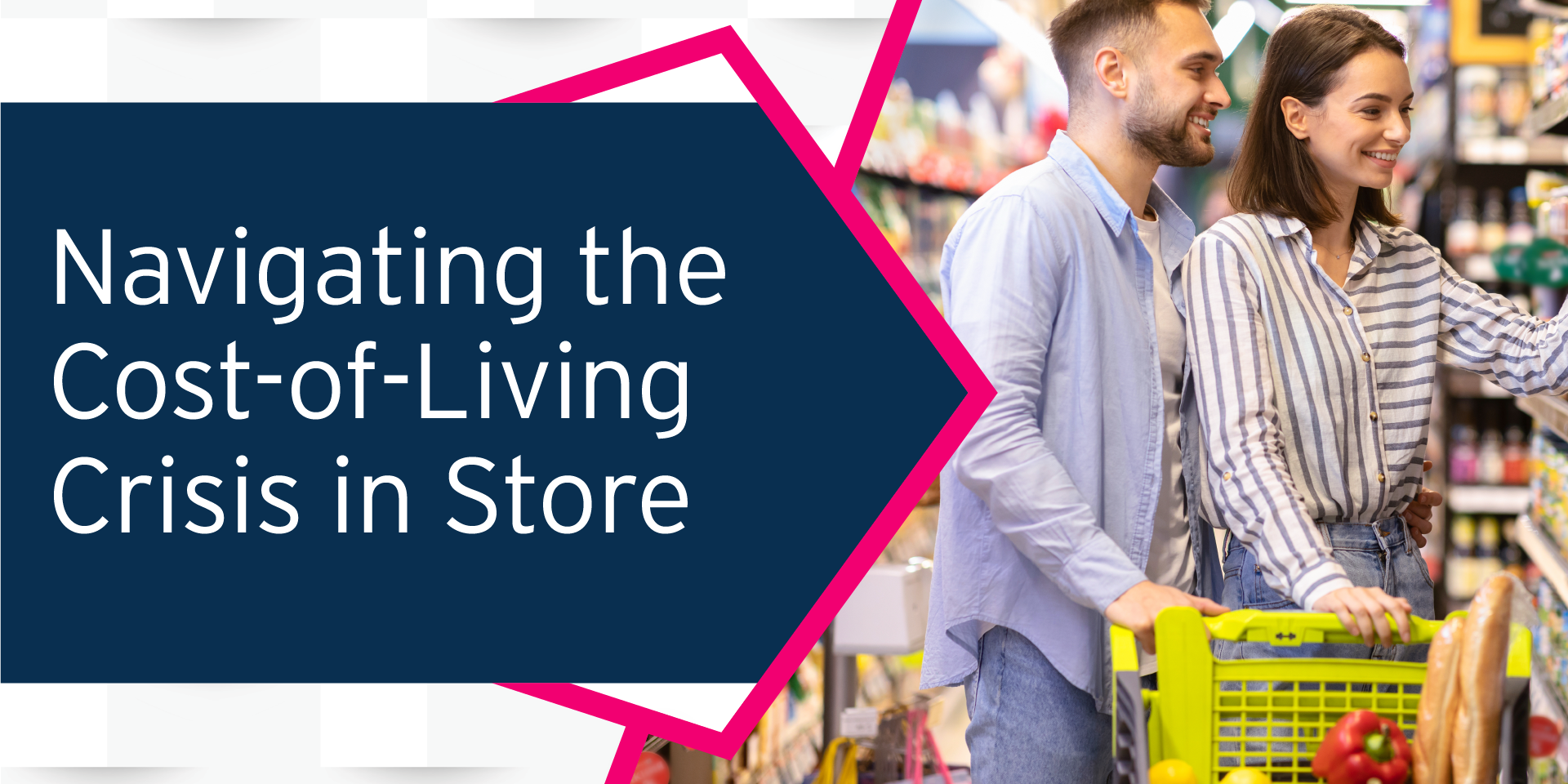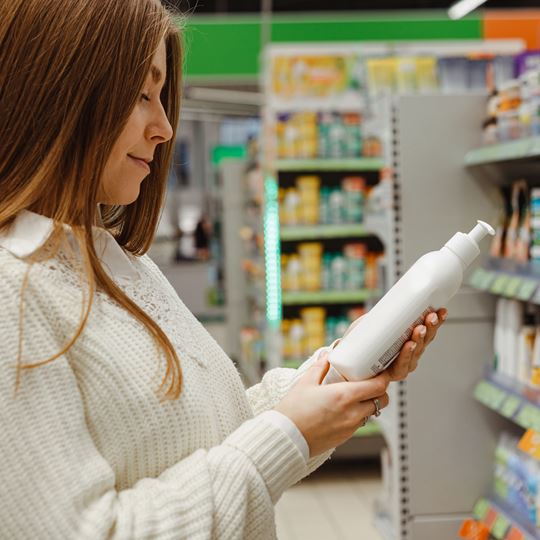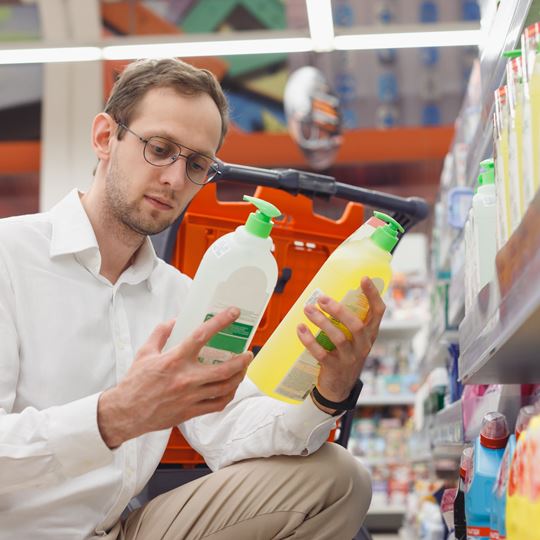Navigating the Cost-of-Living Crisis: Boosting Sales in Household, Health, and Beauty Categories

As you may already know, real wages are declining, and shoppers' purchasing power is decreasing. Grocery inflation has surged to 17.1%, and it's getting harder to find products that cost less than £1. This economic situation has led to many shoppers downgrading their financial status from "Comfortable" to "Managing" or from "Managing" to "Struggling." Although this doesn't always indicate a significant change in their income, it affects their shopping behaviour and how they perceive their financial situation.
How shoppers feel about their finances is important because it affects their behaviour. There are many different stats about how many people are having financial difficulties, with the specific numbers depending on exactly how you ask the question. One stat that is worth taking note of, however, is that one in four shoppers have downgraded themselves from either ‘Comfortable’ to Managing’ (14% switch) or from ‘Managing’ to ‘Struggling’ (10% switch)1.
It’s important to note that this doesn’t necessarily mean that their actual financial situation has changed significantly (albeit in some cases it will have). It’s also important to note that those who are ‘Struggling’ do not necessarily have the lowest incomes, because some higher earners also have very high outgoings. So with that said, this ‘downgrade’ insight is important because the downgrade changes how these people think about how they shop.
One of the biggest changes in these ‘downgraded’ shoppers is that they are switching from big main shops to smaller, more frequent top-up shops because this helps them use items more efficiently, cut down on wastage, and also helps them manage their budget. Top-up shops don’t necessarily mean the convenience channel, as some are done in discounters or supermarkets, but locality and ease are important for these shoppers, so many are shopping in convenience stores.

There are four main ways that shoppers can save money.
- Buy less
- Buy more on promotion
- Switch to cheaper products
- Switch to cheaper stores
Shoppers are buying fewer items where they can across the grocery market in general, but the household, health and beauty categories are mostly seen as essentials. Even products such as premium face moisturisers are products that many shoppers say they are not willing to sacrifice. Shoppers are buying a bit less, and this is driving a slight decline in the household, health and beauty categories, but the overall decline is relatively small and you should not let this affect the product range you have on shelf.
The number of shoppers who say they are shopping around for the best deals is increasing, from 24% in Dec 2021 to 30% in Dec 20222. The number of shopping trips shoppers are making is increasing compared to the pandemic period, and shoppers are visiting more stores, but both of these numbers are still below their pre-pandemic levels1, so at least some of the change can be attributed to just ‘returning to normal’. The number of promotions available in the market is actually in long-term decline1, so special offers are harder to find than they were a few years ago. The important thing is that when you do have a promotion available, you need to do everything you can to help shoppers see it. Off-shelf promotions see a bigger uplift than those just presented in the product’s normal shelf space, as do those supported by extra POS. The fact that more shoppers are looking for promotions now than they were a year ago means you’re more likely to drive extra sales if you do make them as visible and enticing as possible.
In many categories, private label sales are growing faster than branded product sales, because shoppers are trading down for cheaper products. In total grocery, there’s a clear gap between the growth of brands and that of private labels, although it’s worth noting that the gap between the two is shrinking slightly. However, there’s one category in which brands are growing ahead of private labels. Let the suspense build… we’ll come to that shortly.
In the personal care category, shoppers are trading down to private label1. This should not affect the availability of brands in your range, because the leading brands still take the majority of sales in most sub-categories, but you should offer private label or tertiary brand options where you have space, particularly in shower and bath, hand wash, hand moisturisers and face wash. Hair care, deodorants, shaving and dental care are much more heavily brand-loyal, although entry-level mouthwash does sell well. If you’re a DCS customer, Enliven is a well-known, good-quality, entry-level brand that does the job perfectly…
Household and Laundry are a little more brand loyal overall than Personal Care. During the pandemic shoppers trusted the leading brands, as the experts, to get the job done and sanitise their homes. That brand loyalty has stuck, although we are now seeing some shoppers switching to private or tertiary labels1. Entry-level brands such as Astonish and Elbow Grease are performing well in discounter stores, but you still need a strong presence from the leading brands such as Flash, Cif, Dettol and Mr Muscle, because these still have the biggest share of shopper spending.
OTC Medicines is a completely different story, in which the leading brands are growing and private label sales are declining1. Medicines shoppers are exceptionally brand-loyal because they put trust in the experts. The upshot is that you should prioritise the leading brands in your range – Nurofen, Panadol, Anadin, Benylin, Lemsip, Strepsils, Sudafed, Piriteze, Benadryl, Imodium, Rennie and Gaviscon, and stock Elastoplast plasters in your first aid section too. It’s a very good idea to stock private or tertiary label paracetamol and ibuprofen (such as Galpharm) alongside the brands, as these do sell well to shoppers looking for the lowest price.

Finally… shoppers are switching to cheaper retailers, and as is already well-documented, discounter stores are the fastest-growing channel at +18.6% YoY, driven principally by Aldi and Lidl1. What you might not know is that the second-fastest is Convenience (+5.1%), growing ahead of the supermarkets (+3.8%)1. One reason for the strength of convenience sales is that many households are extremely short on time, so they’re shopping locally to save driving further to a supermarket or discounter. Another reason is that walking to the local convenience store is cheaper than driving (or getting public transport) to a supermarket or discounter, and shoppers are taking into account the full cost of the shopping mission, not just the shelf prices.
We can see evidence of this trend in the data, with Convenience channel growth being driven both by shoppers who are ‘Struggling’ and those who are ‘Comfortable’1. Many of these ‘Comfortable’ shoppers are very short on time and they are choosing to use Convenience stores to save time. These shoppers have money to spend and they will buy their usual products and brands, as long as they have them on shelf. The most common mission in Convenience is the Planned Top-Up shop, making up more than one in five of all shoppers, and this larger shopping mission is high-spending and, as you might expect, it over-indexes with the household, health and beauty categories3, which is all the more reason to get these categories right in store.
If you’re a convenience store operator, you can find full detail on how to select and lay out your HHB product range at CoreRange.com.
Sources:
1: Kantar, FMCG panel, Feb 2023
2: IGD ShopperVista research, Dec 2022, Base 1000+
3: Lumina Intelligence Convenience Tracking Programme, Feb 2022
